Episode #361: Maximizing Your PLCs: Turning Collaboration into Real Impact
LISTEN NOW HERE…
WATCH NOW…
Are your Math PLCs (Professional Learning Communities) or teacher collaboration meetings feeling unproductive? Do they often turn into extra prep time or casual check-ins rather than meaningful discussions that drive student learning? In this episode, we dive into how to reclaim and refocus your Math PLCs so they become a powerful force for improving math instruction. From defining the facilitator’s role to structuring meetings for maximum impact, we’ll share practical strategies to ensure collaboration leads to better student outcomes. If you’re ready to transform your PLCs into high-impact learning spaces, this episode is for you!
Key Takeaways:
- Shift from informal meetings to intentional, goal-driven collaboration focused on student learning.
- Ensure facilitators, teachers, and leadership teams have clear expectations to maximize efficiency.
- Implement a predictable meeting structure with data analysis, lesson planning, and instructional reflection.
- Focus discussions on instructional strategies and student outcomes rather than just operational tasks.
- Encourage open dialogue, shared decision-making, and accountability to ensure continuous improvement.
Attention District Math Leaders:
Your Guide To An Effective Math PLC Structure
Not sure what matters most when designing math improvement plans? Take this assessment and get a free customized report: https://makemathmoments.com/grow/
Ready to design your math improvement plan with guidance, support and using structure? Learn how to follow our 4 stage process. https://growyourmathprogram.com
Looking to supplement your curriculum with problem based lessons and units? Make Math Moments Problem Based Lessons & Units
Be Our Next Podcast Guest!
Join as an Interview Guest or on a Mentoring Moment Call
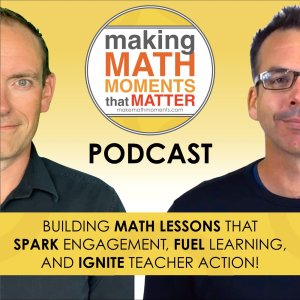
Apply to be a Featured Interview Guest
Book a Mentoring Moment Coaching Call
Are You an Official Math Moment Maker?
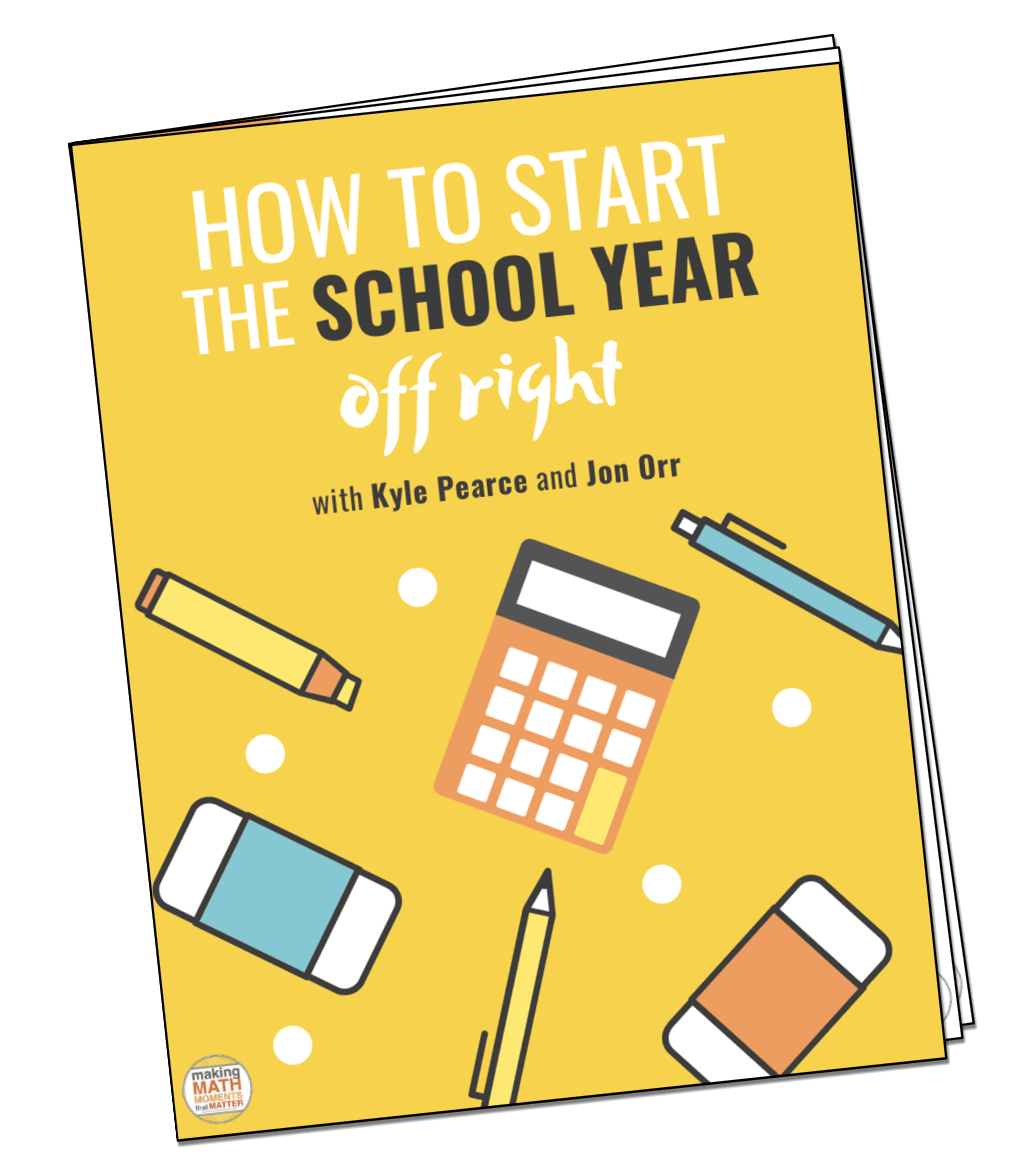
FULL TRANSCRIPT
Yvette Lehman: All right, today we are going to talk about how to maximize teacher collaboration time. And this might look a variety of ways, like we call them PLCs, so professional learning communities, sometimes they’re embedded time. And I think that’s what we’re gonna really describe today. It’s like when embedded time, if there’s embedded time in your schedule to meet with a grade level team or division team.
How are we using this time and are we using it effectively to really support the changes we want to see in our classroom?
Jon Orr: Yeah, yeah. So when you think about like that collaboration time, you know, that you currently have access to, like, what does it look like? Like, are we are we maximizing it currently? it is, you know, or, you know, are, are we typically, you are we using this time to have give ourselves a little bit more prep time or photocopy time structure my lesson time and it is not actually for collaboration time. And, and why I kind of hint at that is, is we look at, we looked at, a resource that we’ve been heavily relying on,
which Systems for Instructional Improvement, which is a research study or a book that was written, and we can share that book in the show notes, but there was a component of that about what is collaboration time currently look like at some of the districts that were studied, and about 70 % of the time, that collaboration time, like in that collaboration time at schools, 70 % of the time was not, it was not used for actual collaboration on instructional.
practice and high quality materials for instructional practice to be used in the classroom. was, you you can imagine like 30 % of that time was focused on how we can say use this instructional material to, you know, to help our students with thinking and resiliency and all the things that you really want in your classroom. But 70 % of that time was mostly worried, you know, mostly concerned around logistics. Like what are we going to be teaching next week? Or maybe tips and tricks around like, hey,
Do you know about this? Here’s a worksheet that you should think about too, or here’s this, like 70 % of the time was really just about the what instead of the how and the why. And I think if you’re listening to this podcast and you’re involved in collaboration time and you’re thinking about that right now, it’s like, are you right now focused on the what? And you know, because we’re gonna argue that if you’re listening to us right now and you’ve listened to us in the past, it’s likely that you.
yourself focus on the why, and maybe your collaboration time is focused on the why and the how at that great rate of a time spent, or maybe it’s not, and you would like it to be. And in this episode, we wanna kinda unpack why we wanna do that, what’s the purpose of the collaboration, what is it supposed to be, and then how do we structure that from the teacher point?
Jon Orr: If I’m a teacher that wants to have more collaboration time, because I strongly believe that it can help our students and myself and my colleagues get stronger at what they do for our student experiences, then how do I go about doing that when I’m a colleague? And how do I structure what that looks like? And what does the structure of that PLC time look like so that we maximize the time and the impact that we’re trying to make in our own classroom, but also the classroom next door?
Yvette Lehman: Well, the unfortunate part about this conversation is I recently said to somebody, you know, it’d be great if we had more PLC time back in schools. And they said, well, it wasn’t being used effectively anyway. And so it was kind of like, it was a waste of time. was being misused in the past. It’s a hard pitch to get it back when it’s not being leveraged for the reasons that we’re describing. But the sad reality is it’s one of the most impactful models.
Like we know that, right? We know that the work that happens at the school level is where real change is going to occur, particularly if it’s supported by Pullout PD and coaching. If it’s part of an aligned cohesive structure, where imagine we go to Pullout PD, we get some messaging, we do some new learning, but then we take that learning back to our learning community where we’re working with colleagues who are next door to us.
where we can really dig into that work at the school level with the students in front of us. you know, I guess our concern is that this time is so valuable and we don’t want it pulled back. also see it as a missed opportunities to support ambitious teaching when we’re not leveraging it. So if you’re feeling that way too, if you’re in a school and you’re thinking, yes, I…
I’m kind of tired of either not meeting during that time or meeting during that time, but feeling like it’s a waste of time and not really getting a lot out of it. Here are maybe some strategies and we know you’re in a difficult spot, but here are some strategies we might suggest to start to shift the focus of that time together.
Jon Orr: Yeah. Yeah. And like, I was, I was going to comment on that before we kind of give those strategies about that. That is a tough spot to be in, in, in, to kind of say, got to, you know, I’d like to make some shifts, but I don’t want to like step on toes. I don’t want to like ruffle too many feathers. have to work with these, these folks every day. And when we, know, maybe this is, maybe this is the first tip you’ve had is, that oftentimes when we’re trying to support others,
on change, because that’s what we’re doing, right? Like you’re, you’ve made the case that I think collaboration time is worthwhile. And if you’re also not sure of that, that you’ve got colleagues who maybe not, you know, maybe you’ve got colleagues who are thinking the same way about math class, and you’ve got colleagues who are working on similar things that you’re trying to work on in your math class, and you would love more time with them. That’s one thing, like that’s great. Like obviously that-
collaboration time is going to help you learn from them, them learn from you, and you’re going to build that together. But if you also have colleagues that are like, I know that that’s going be a tough experience to kind of try to coordinate to align our practices to learn from each other. There is value there for you and them at the same time. Because memory that a few a few months ago, we recorded an episode of like, how can we learn from each other when we have vastly different experiences in our math education and vastly different beliefs around math education?
And we can build off of different experiences. Like you were saying, that one experience you had was, you know, that educator who only looked at the algorithm and you looked at it differently, but when you joined forces, you know, both of you saw some points of view that actually impacted what you were doing in the classroom. And that right there is like why you want to start meeting together when you know it’s going to be a tough situation. So, you know,
that maybe that first tip is when you start, you know you have to have these types of conversations with folks. You want to think about like, do I bring us together? Because there is a case, like the case about your PLC right now is that that time is supposed to be there, but everyone goes and does their own thing. Cause that could be a possibility you’re sitting in right now. It’s not structured. It’s got like, it’s supposed to be structured. It’s supposed to happen, but no one’s really leading it.
Jon Orr: and no one’s really like honoring that we’re supposed to do that. Or someone makes excuses. Maybe you all get in the same room or you’re in the same space, but then someone’s like, I’m just gonna go around a photocopy, I’ll be back in a few minutes. Or someone’s like, I’m gonna go make this parent phone call, I’ll be back in a few minutes. And it’s like, we’re not honoring that time. And if that’s the case, I’d like to, maybe this first tip is to think about what we’ve talked about with change in the past is saying, sometimes.
thinking about the rider, the elephant in the pathway when you’re trying to make change. And the elephant represents our emotional side and the rider is our logic side. A lot of times we’re like, well, it makes sense to do this. That’s your rider. But most of the time decisions are made with your elephant. The elephant goes wherever it wants. It does whatever it wants. And it’s the hardest part to change, which is our emotional reaction to things. if you’re gonna say, have these discussions with fellow educators,
we need to structure those conversations around addressing their elephant, which is like their emotional side, their fears, what they’re going through. And we usually use the term pebbles in their shoe. What pebbles are rattling around in their shoe right now that maybe we can say, hey, if that’s a pebble in your shoe, it’s a pebble in my shoe as well. And it’s a pebble in so-and-so’s shoe down the hall. Maybe the three of us or the four of us can get together at our next PLC and
and work on a lesson plan or look work on a structure in our classrooms to kind of work on this. And that’s the that can be the start of like, bringing that group back together, if that’s the case. So, you know, thinking about how do I address those pebbles as the first and foremost way to approach the situation can be helpful, a helpful starting starting tip.
Yvette Lehman: feel like it might be helpful, honestly, to describe what would be ideal almost. And there’s not one ideal. There are many different ideals of how PLCs or teacher collaboration times can be structured, but I just wanna almost envision what would it look like if it was working productively. Okay, so imagine, like I’m picturing in my mind, if it was working productively.
I believe and you may disagree or agree, not sure John, but I think having a structure in place is super helpful. And not a structure that’s necessarily super rigid, but just a predictable, I guess, framework that we use to unpack this learning. And so one of the frameworks that I’ve been investigating and is widely being adopted across North America and many leaders talk about is the formative assessment cycle where, you know, we’re
continuously bringing student work to the table and we can break down that structure a little bit more in detail. So in my mind, if this PLC structure was running effectively, it would have a structure. It would have a clear purpose and a clear goal. There would be a level of accountability and follow-up. It would align to the work that’s happening at the school level and the district level in the area of mathematics.
We would have roles and responsibilities amongst the team where we have shared ownership and leadership of these meetings. And we would be confident that the work that we’re doing during collaboration time is having a positive impact on student outcomes in our classroom. And we would have evidence to prove it. kind of, and that’s kind of, you know, this, this cycle that’s happening where we’re really seeing the value of the time we’re coming together. We’re uncovering pebbles, we’re digging into the math, we’re looking at student work.
We’re aligning around assessment. We’re planning for instruction. And ideally, teachers don’t feel like this time is separate from their planning for classroom instruction. It’s for the purpose of planning for classroom instruction, but rather than doing it alone, I’m doing it with my community and it’s really targeted and meaningful.
Jon Orr: Yeah, like I think that answers like I think that addresses a especially if you are making it useful for classroom practice in giving something that teachers can make use of and or not giving but working together on something that makes it feel useful in the classroom because teachers are you you’re going to say as a teacher, I can’t put anything more on my plate. And and I used to say that as well but you know that if you’re getting together with the purpose of I’m going to pluck this pebble for my shoe.
And that that pebble from my shoe is aligned to the work that we’re doing as a school and our school improvement plans and some of the goals that we’re working on. And it’s actually helping students say, understand and learn the math at say the deeper level or at the level of grade level then. And you’re also helping understand how to use your existing curriculum or your existing resource or a lesson plan that you’re like.
I have a I need a you know, a lesson plan for this date. And if you can co plan that together, or you work on what that looks like together, or you unpack your resource together with say, those goals in mind, that can be extremely useful for your colleagues, your for yourself to kind of go like, what does this lesson look like if we all attempt it? What does this lesson look like if we we unpack it together? Because I think that is a major pebble is like, what am going to do tomorrow?
And if we can work on say, hey, next week or three days from now, this is what we’re going to do, or this is what it’s going to look like, then you’re plucking that pebble from from your colleague’s shoes.
Yvette Lehman: I’m gonna walk through like a role play. So imagine this is me and I’m in a school and I’m feeling this, you know, missed opportunity for productive professional learning, but the time is there. So time is not an issue. It’s just that it’s not being leveraged. Okay, so my first step would be, I’d probably go to my administrator and just seek clarity on the intention of the time.
Like what is the purpose of the time? What is the goal for the time? What is the time supposed to look like? Because we talk all the time about alignment. And I want my principal to be supportive of the work that we’re doing during these professional learning communities. So I think that there should be transparency and communication from both directions. I think once I had that clarity, and maybe the answer is we don’t know, you know, we haven’t really defined it. Let’s work on that together.
I think that I would take your suggestion, John, and approach it through a pebble, and I’d probably reach out to my colleagues and say, hey, I’m struggling with this concept, or I know that I’m going to be tackling this particular standard in our pacing guide. It’s coming up next week. And I’m not sure. I’ve tried it in the past, and it wasn’t super effective. And I didn’t feel like students were super successful.
can I propose a structure for the next three times that we meet where we’re gonna work through this standard together and unpack it, we’re gonna do some student assessment and we’re gonna plan instruction. And I really hope that when we come together, it will help me, like make it about, like, and maybe you have this problem as well, but I could really use your help in understanding the work that we need to do to teach this more with greater impact. And I think that maybe by saying, I’m gonna commit to doing the.
the leading and the planning and I’m just, I’m to be very clear about what the expectations are and what I’ll ask you to bring. But then, you know, next time around, if somebody else has a pebble, we’ll unpack your pebble. So I think that where we caution is like, you don’t want to come in and just start, you know, taking over the PLC and like, know, now this is my PLC and this is how we’re going to run things. But being, you know, hopefully the relationships are there with your colleagues that you can say, you know, I need your support.
And oftentimes when people feel valued, they’re more likely to step up to the table. And I think about that exact example you described earlier where I had a colleague who was very procedural where I tend to go more conceptual. But if I went to that colleague and said, hey, I really need your help unpacking this standard. I need to lean into your experience. I need to know how you would go about teaching this particular lesson. I know that that person would step up because they feel valued and they feel empowered in that situation.
Jon Orr: totally agree. totally agree. There’s value in making other people feel valued and needed. it goes, it makes, it adds that layer of trust, but also builds relationships. And it’s gonna give that person a sense of like, was helpful today and I wanna be helpful in the future. And then you can start that repeated structure as a norm.
And that can be how you shift from having a structure, you know, no structure to some structure to better structure. then that community can build because it doesn’t have to be right. Like it doesn’t have to be, Hey, we all need to get together to do this. can start small and then build from there as well. As long as, know, assuming that say you haven’t been, you know, that, that time hasn’t been spent collaboratively at that, at that time.
Yvette Lehman: So now I’m gonna describe and if anybody wants a copy of this, reach out or I think you’re gonna link it in the show notes as well. But I’ve been working through, if I was going to do this tomorrow, if I was going to propose this to my colleagues, what would I do in those three weeks? Right, so I’ve investigated, there’s the kind of collaborative inquiry model, there’s the formative assessment cycle, there’s a lesson study, there’s a lot of different ways that you can approach this collaboration time.
Jon Orr: I’ll put in the show notes, Yeah, what does it look like?
Yvette Lehman: I’m leaning into the more of a formative assessment cycle because I think having student work on the table gives us the greatest chance of transfer to classroom practice. And we’re directly responding to evidence of student thinking. So I’m gonna break down basically what my three meetings would be. And again, this would be the first time through, I’m gonna, in this case, play the role of the facilitator. We’re gonna work through this structure and then I’m hopefully gonna hand the baton and somebody else is gonna take the lead next round.
But in the first meeting, I would bring forward the standard or expectation that I want to unpack or the big idea from the curriculum. We would unpack it. We’d talk about it. What prior knowledge do students need to be able to access it? What’s the cognitive demand of this particular standard? What’s the vertical alignment? Where does it come from? Where does it go? I also think it’s really important for us to co-construct a learning goal. And that’s hard work. We talk about that all the time. Practice zero of the five practices. Establish a learning goal is hard work, especially when your learning goal is not about what they can do, but rather the lasting and enduring understanding that results from that instruction. So let’s go for sure.
Jon Orr: Yeah, and it’s extremely important, right? Like I think we skip over that or we gloss over it a lot of times when we look at, say, the existing resource, because you’re right, we’ll just default to be like, I see the procedure that needs to pop out here at the end. Therefore, that’s my learning goal. And that might not be the case when you think holistically of, like, what is it that we want that lasting learning to take on?
Yvette Lehman: And then lastly, in that first meeting, we would select a formative assessment task to bring back to our students, where we’re gonna gather evidence of student thinking. And so there are a lot of places that that task can come from, and I don’t think of it as a test. I think of it as maybe like one rich question that they’re gonna interact with independently, or maybe a few questions, one with lower cognitive demand, one with higher cognitive demand.
Certainly a question though that’s media enough for them to show us their thinking. I would love to see that question come from a high quality instructional material that’s already being used in our buildings or from a standardized assessment. And the value of if you have a good standardized assessment that, you know, isn’t just procedural and has rigorous content, by pulling a standardized assessment question, we’re also getting more familiar with what is the
What does mastery of this particular standard or expectation look like? Right.
Jon Orr: look like to ourselves, look like to our colleagues, but also look like on the actual assessment, like what is it that grade level is being assessed at?
Yvette Lehman: Mm hmm. Right. So that’s meeting one. Meeting one is, you know, I bring the standard or the expectation to the table. We unpack it. We write a learning goal and we pick a task that we’re going to take back to our classrooms. OK. And then naturally, you know, meeting two, we come back with the student work. And this is where we talk about this all the time. Like one of the most valuable learning experiences for us was moderated marking.
you know, coming to the table with student work, having conversations about how we would assess and making sure that there is consistency in our exit. Like if I’m giving this student a four, but you’re giving that same student a three, we need to have conversations about why and what the success criteria is and how we’re determining the level of achievement.
Jon Orr: Yeah, that, cause well, cause I think that that right there is, the power in like what you’re trying to do because you’re going to unpack, you know, beliefs around what it is that the learning goal really is for that person and, and, and what you want it to be as a group and collaborate, you know, collaboration is gonna, is going to help you get there when you go, Hey, I think this is what this looks like. Because in all likelihood is when you bring that assessment back and you haven’t had the success criteria discussion, you’re going to make it.
Like that’s what that does. Like that’s what modern marketing does is you start to build what is it that we’re looking for for grade level? What does it look like if we’re above grade level? What does it look like if we’re just slightly below grade level on say this learning expectation and that professional development, the collaborative collaboration that you’re doing right there and just in that small meeting. And if it goes, especially if you can repeat it, know, week to week or every three weeks, then that’s like.
It’s lasting professional development, right? So you’re unpacking that standard for, you you have that, you’re not going to unlearn it. Like it’s just going to stick with you. And then next year, you know, that component in the next year, you know, you’re just going to get stronger at the understanding of your mathematical content, but also what students understanding of mathematical is, what it looks like, sounds like.
Yvette Lehman: Yeah, so then ideally once we’ve moderated our student work, we’re planning our instruction. We’re actually co-planning our next moves in the classroom. So what are we going to do to support students who may demonstrate significant need? What are we gonna do? What does our high quality instructional material have us doing when it comes to teaching this particular standard? We’re really gonna think about, and we talked about,
We want it to be a planning period. want people to feel as though what they did during that time can transfer to their plans for the classroom this week. It’s timely and it’s relevant. And then, of course, in the third one, we come back and we, one of the recommendations I read is that, you you bring new work to the table. So it’s like we, you know, we had a common assessment.
But now we want to bring kind of evidence of the, and maybe we pick one or two particular students that were students of interest who were maybe just on the cusp of mastery the last time we were together and we show their growth and we talk about what we did to achieve that growth. And this is really where we analyze the impact of our instructional moves. We talk about what worked, what didn’t work, or what work we need to continue to do in order to strengthen the understanding of this particular learning goal. And then you repeat it. And then again, you know, it’s like now somebody else says, okay, well,
You know, this is one that I would like to unpack and this is one that I haven’t had a lot of success with in the past or that I’m new to the grade. I’m not super familiar with teaching this particular concept. Let’s dig in.
Jon Orr: Totally. Totally. if you establish that cycle, that culture of that continuous learning and unpacking standards and how it relates to the current curriculum you have and how it relates to your standards for your state or for your province or for your organizational standards, as I said, it’s long lasting work that it endures.
And it’s probably, and I think you kind of like lead this before when you said that the PLC process, like you knew it well, is some of the most impactful PD. So if you can create this culture and this system, it’s some of the most impactful PD you’re going to do as a team. And this is how, say, your school will get stronger. And I know that when we did this, this is how our team got so strong, is because we built this into a regular occurrence.
and, and I know like, I’m going to add this, this caveat here because we, we did that same, same process, but we added in because there was, there was extra funds that we had at the time that didn’t always last, but the extra funds were to release some teachers to go observe. So even though we may have say unpacked this standard together and looked at student data, we’re all going to go back and teach it. Sometimes we had a teacher or two visit another classroom while that was happening and we observed that lesson.
so that when we did come back, we could talk about it as well as like, hey, how did the students respond when we prompted this way? Or how did the students look, know, what was some of the thinking that was happening? So you get that second set of eyes because as an educator, you know that you can’t see everything that’s happening in the classroom at all times. And having that second set of eyes witness and experience things that maybe you missed can actually help you kind of strengthen that for the next time around.
Yvette Lehman: And our last maybe a little piece of advice for somebody out there who wants to get this going is invite your coaches in, invite your coordinators in, invite your principals in. You know, when it comes to alignment and ensuring that we’re all on the same page, the more we participation we have in this learning cycle, the better and the more we can all be, you know, crafting that common vision for ambitious and equitable teaching within our building. So, you know, open the door to others who want to join this community as well.
Jon Orr: If Yvette shared the structure, the PLC structure that she outlined here, we’ve got a document that you can download so that you can see the structure. It’s got helpful tips. It’s got tech steps. It’s got suggestions and prompts embedded in that structure. So it’s got a little bit more in depth than what we’ve just outlined here today. You can head to the show notes page here on this episode. You can download that structure so that
you can use it and review it or add to it, you know, like take it and morph it or use it as your structure and your framework for when you’re leading or trying to lead or even start a PLC. So go ahead and do that. You can always head to makemathmoments.com and find the podcast page and find this particular episode.
Thanks For Listening
- Book a Math Mentoring Moment
- Apply to be a Featured Interview Guest
- Leave a note in the comment section below.
- Share this show on Twitter, or Facebook.
To help out the show:
- Leave an honest review on iTunes. Your ratings and reviews really help and we read each one.
- Subscribe on iTunes, Google Play, and Spotify.
DOWNLOAD THE 3 ACT MATH TASK TIP SHEET SO THEY RUN WITHOUT A HITCH!
Download the 2-page printable 3 Act Math Tip Sheet to ensure that you have the best start to your journey using 3 Act math Tasks to spark curiosity and fuel sense making in your math classroom!
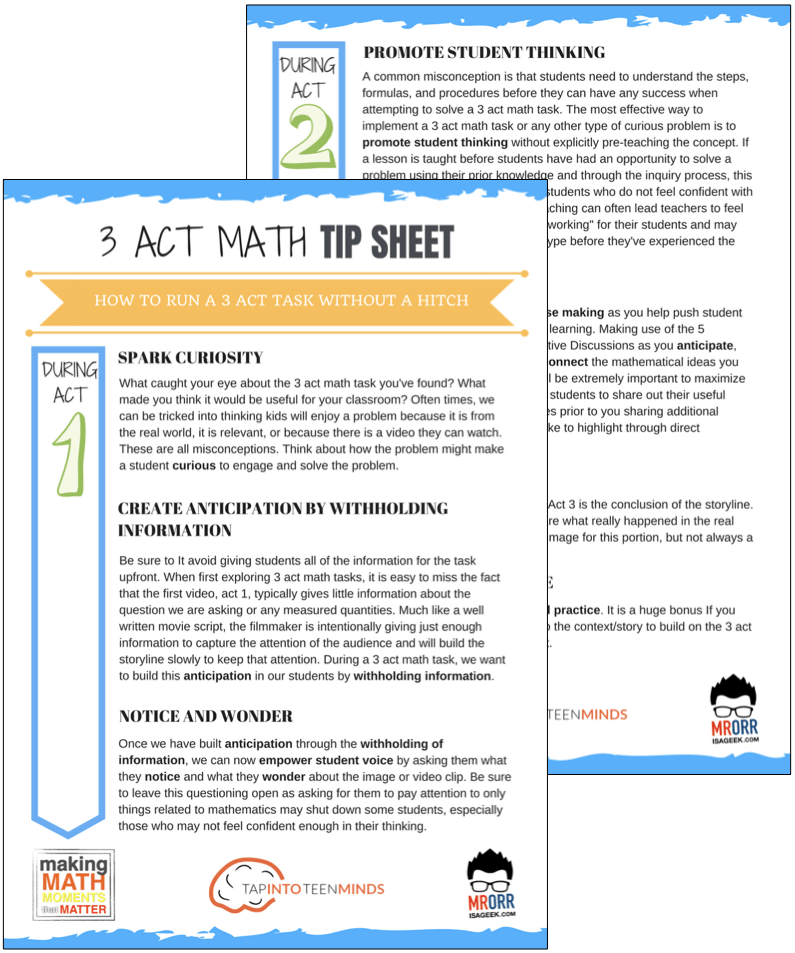
LESSONS TO MAKE MATH MOMENTS
Each lesson consists of:
Each Make Math Moments Problem Based Lesson consists of a Teacher Guide to lead you step-by-step through the planning process to ensure your lesson runs without a hitch!
Each Teacher Guide consists of:
- Intentionality of the lesson;
- A step-by-step walk through of each phase of the lesson;
- Visuals, animations, and videos unpacking big ideas, strategies, and models we intend to emerge during the lesson;
- Sample student approaches to assist in anticipating what your students might do;
- Resources and downloads including Keynote, Powerpoint, Media Files, and Teacher Guide printable PDF; and,
- Much more!
Each Make Math Moments Problem Based Lesson begins with a story, visual, video, or other method to Spark Curiosity through context.
Students will often Notice and Wonder before making an estimate to draw them in and invest in the problem.
After student voice has been heard and acknowledged, we will set students off on a Productive Struggle via a prompt related to the Spark context.
These prompts are given each lesson with the following conditions:
- No calculators are to be used; and,
- Students are to focus on how they can convince their math community that their solution is valid.
Students are left to engage in a productive struggle as the facilitator circulates to observe and engage in conversation as a means of assessing formatively.
The facilitator is instructed through the Teacher Guide on what specific strategies and models could be used to make connections and consolidate the learning from the lesson.
Often times, animations and walk through videos are provided in the Teacher Guide to assist with planning and delivering the consolidation.
A review image, video, or animation is provided as a conclusion to the task from the lesson.
While this might feel like a natural ending to the context students have been exploring, it is just the beginning as we look to leverage this context via extensions and additional lessons to dig deeper.
At the end of each lesson, consolidation prompts and/or extensions are crafted for students to purposefully practice and demonstrate their current understanding.
Facilitators are encouraged to collect these consolidation prompts as a means to engage in the assessment process and inform next moves for instruction.
In multi-day units of study, Math Talks are crafted to help build on the thinking from the previous day and build towards the next step in the developmental progression of the concept(s) we are exploring.
Each Math Talk is constructed as a string of related problems that build with intentionality to emerge specific big ideas, strategies, and mathematical models.
Make Math Moments Problem Based Lessons and Day 1 Teacher Guides are openly available for you to leverage and use with your students without becoming a Make Math Moments Academy Member.
Use our OPEN ACCESS multi-day problem based units!
Make Math Moments Problem Based Lessons and Day 1 Teacher Guides are openly available for you to leverage and use with your students without becoming a Make Math Moments Academy Member.
Partitive Division Resulting in a Fraction
Equivalence and Algebraic Substitution
Represent Categorical Data & Explore Mean
Downloadable resources including blackline masters, handouts, printable Tips Sheets, slide shows, and media files do require a Make Math Moments Academy Membership.
ONLINE WORKSHOP REGISTRATION

Pedagogically aligned for teachers of K through Grade 12 with content specific examples from Grades 3 through Grade 10.
In our self-paced, 12-week Online Workshop, you'll learn how to craft new and transform your current lessons to Spark Curiosity, Fuel Sense Making, and Ignite Your Teacher Moves to promote resilient problem solvers.
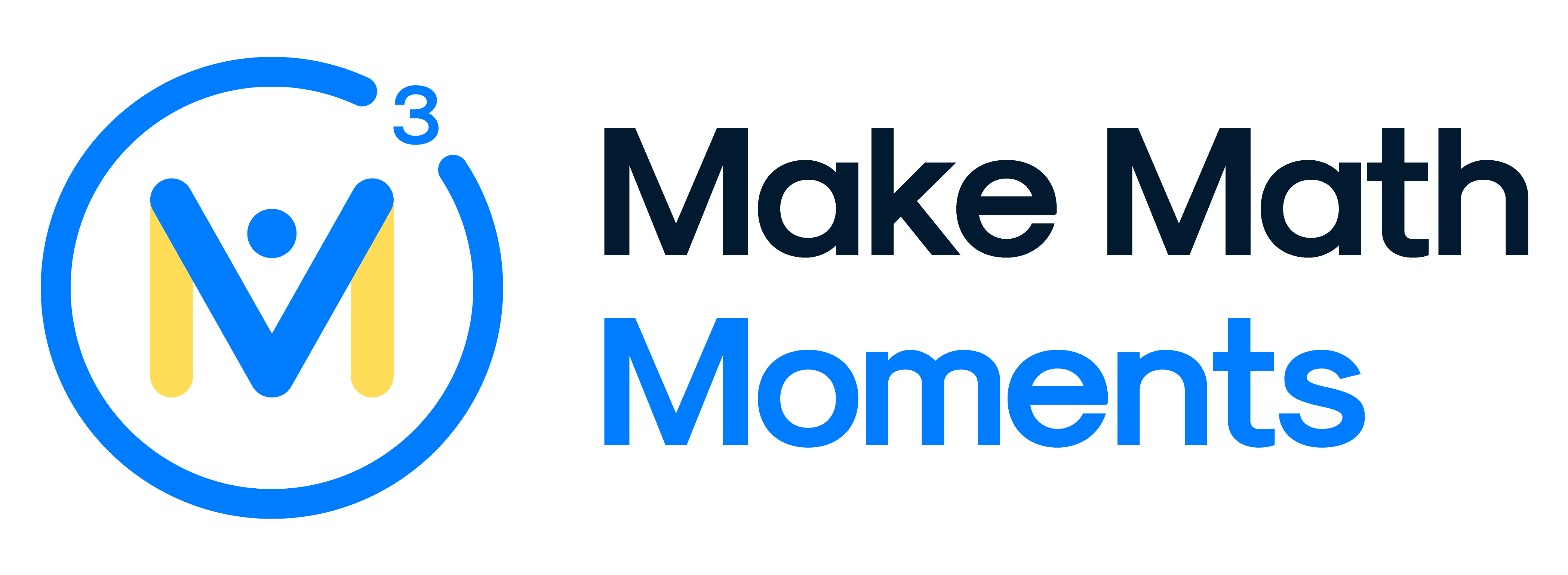



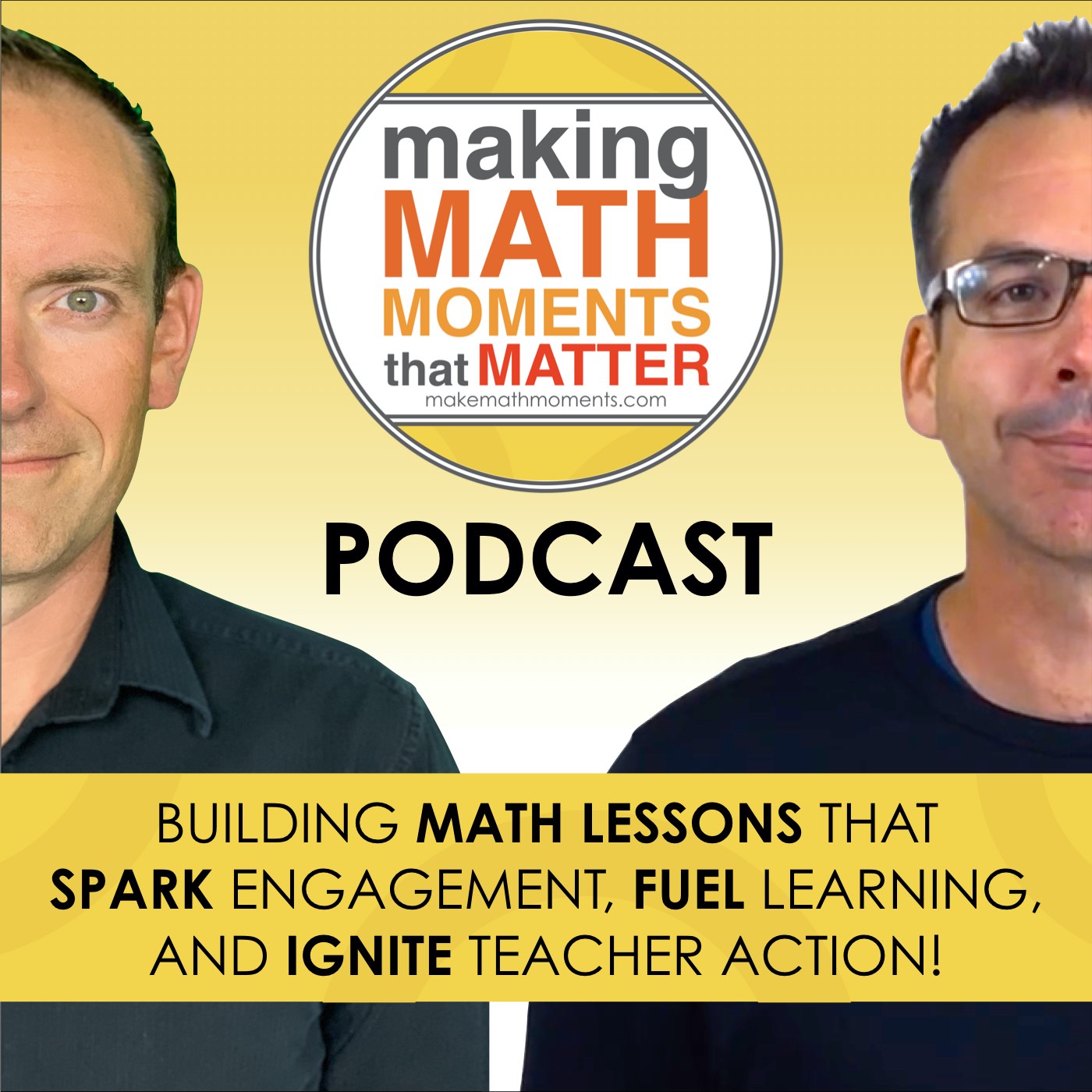
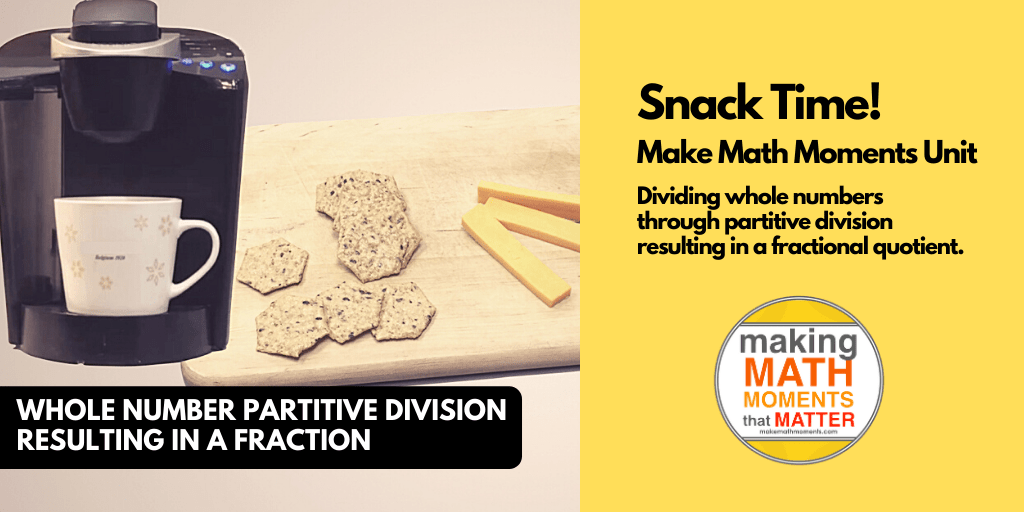
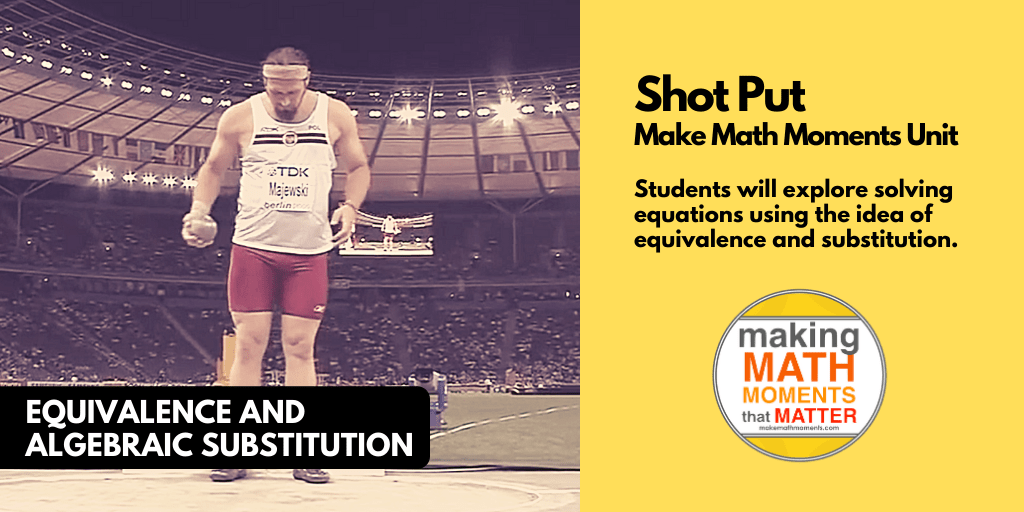
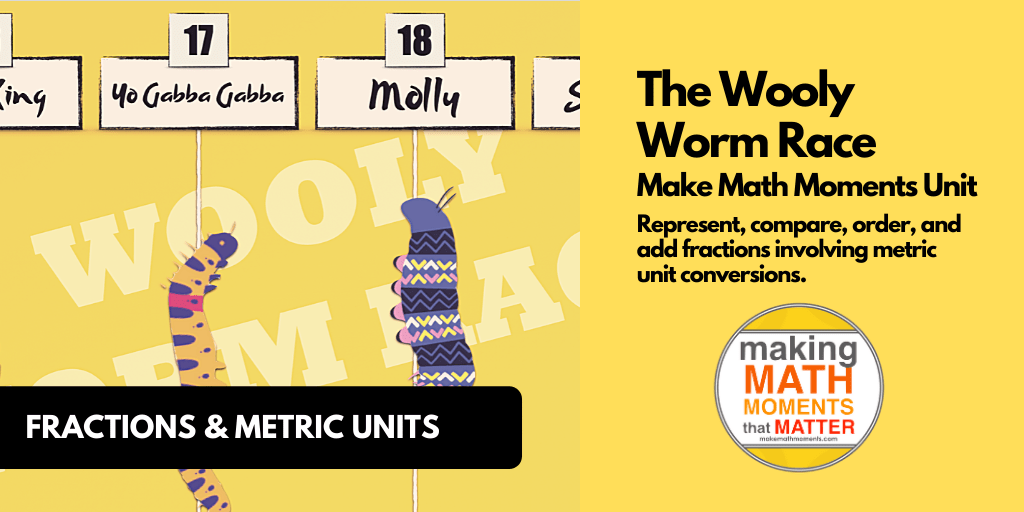

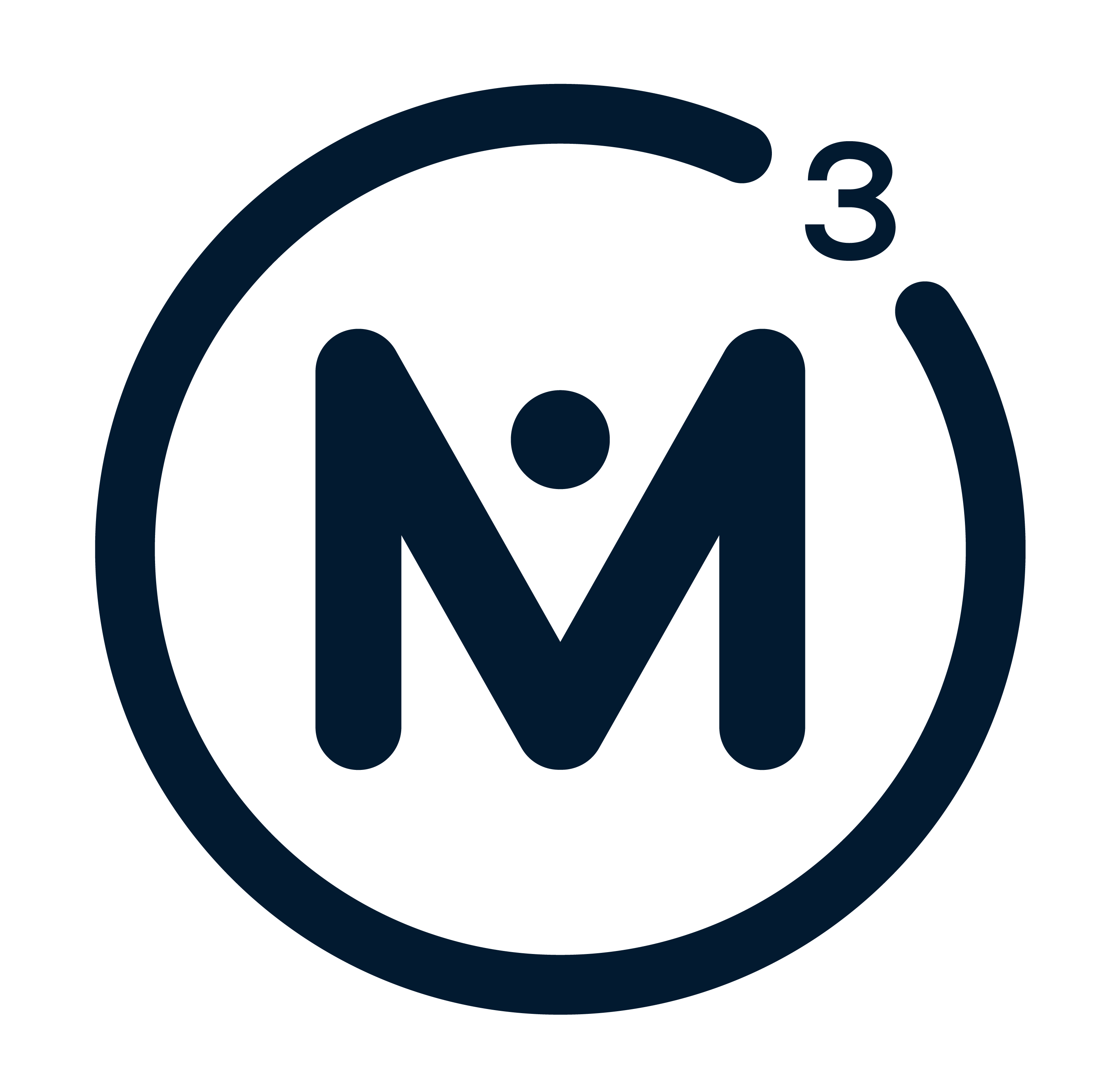
0 Comments